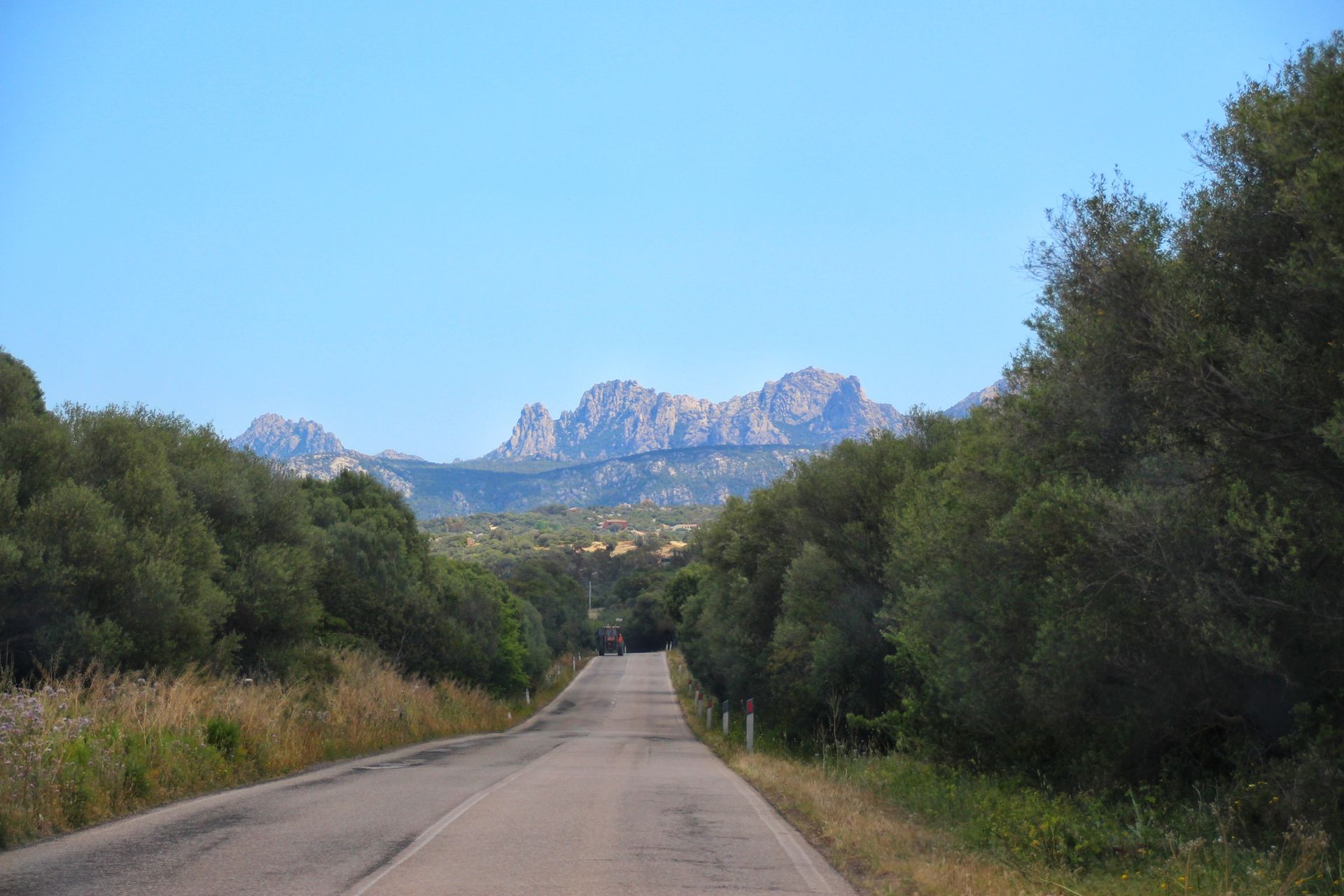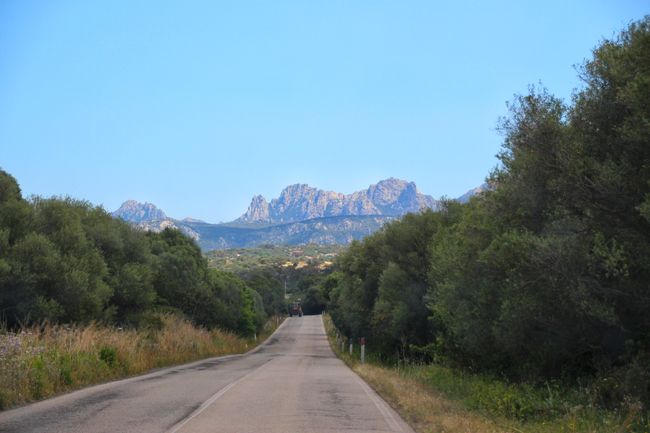Day 16 to 18 Sarajevo
Gepubliseer: 07.10.2018
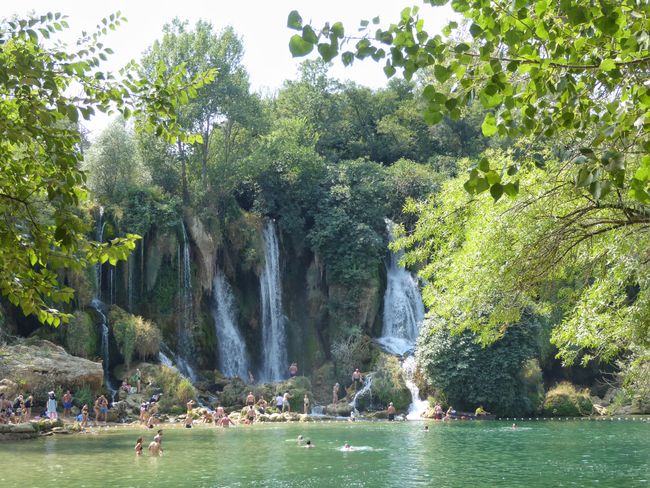
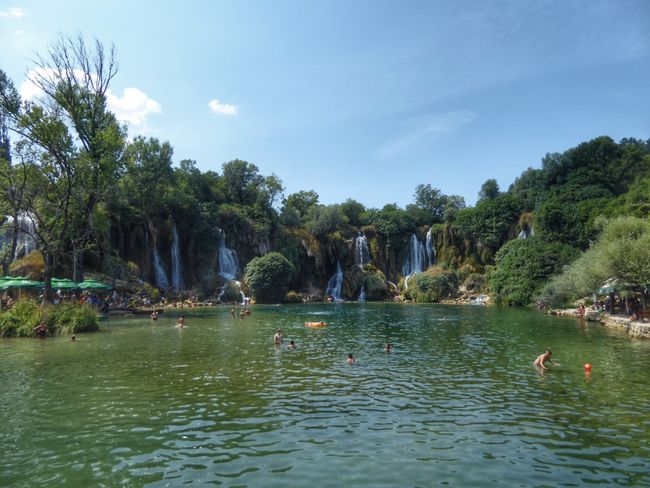
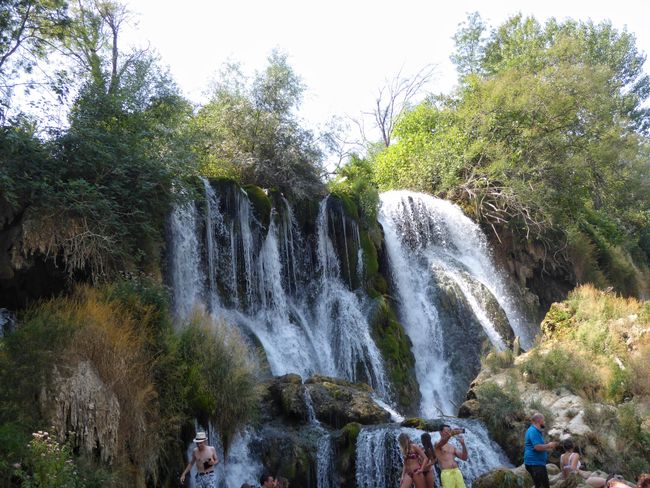
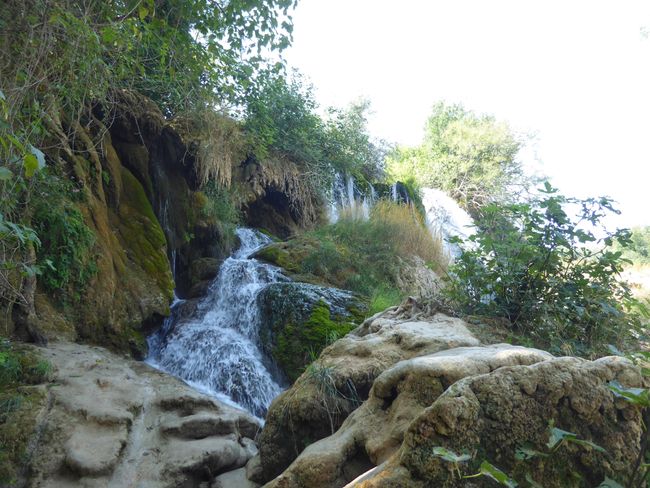
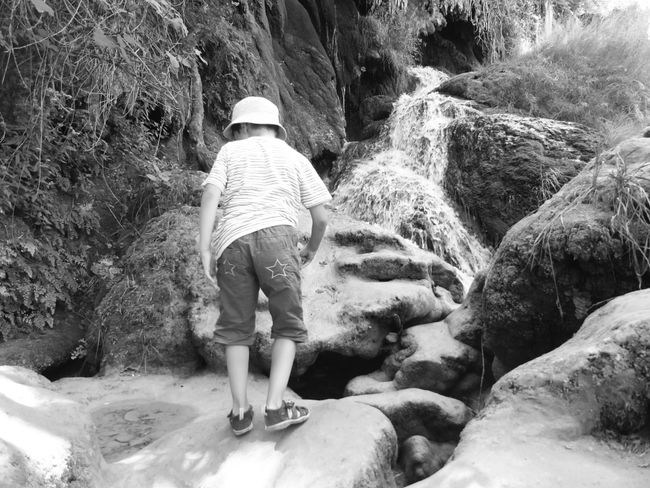
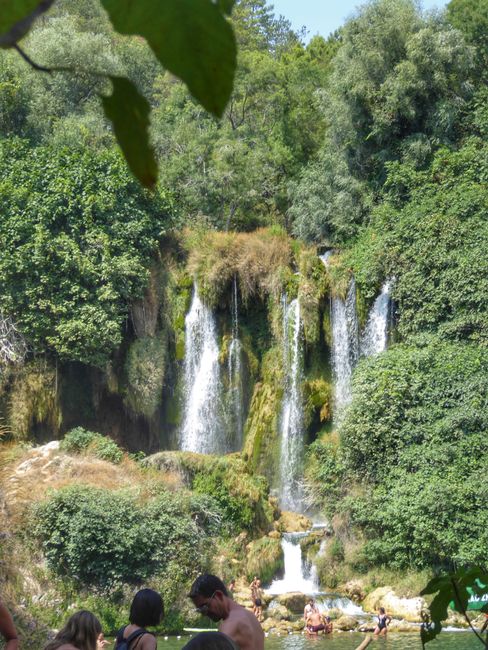
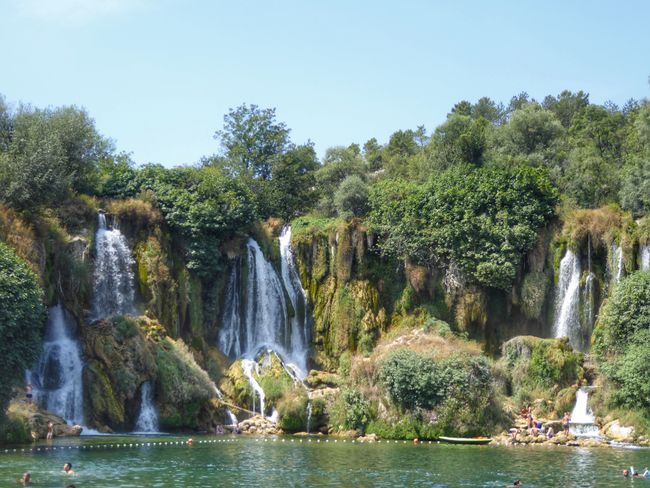
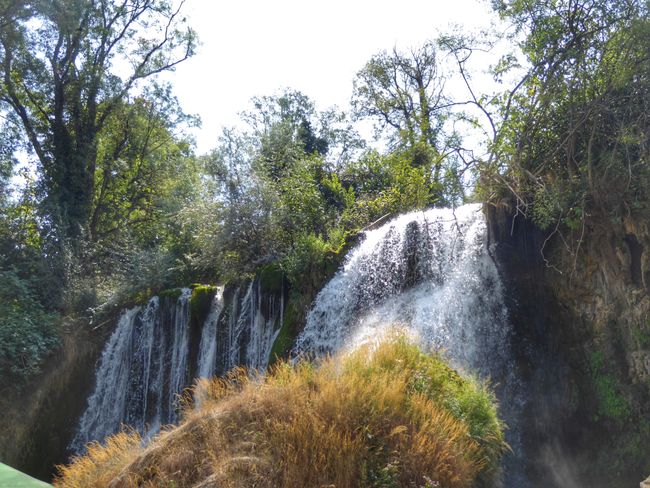
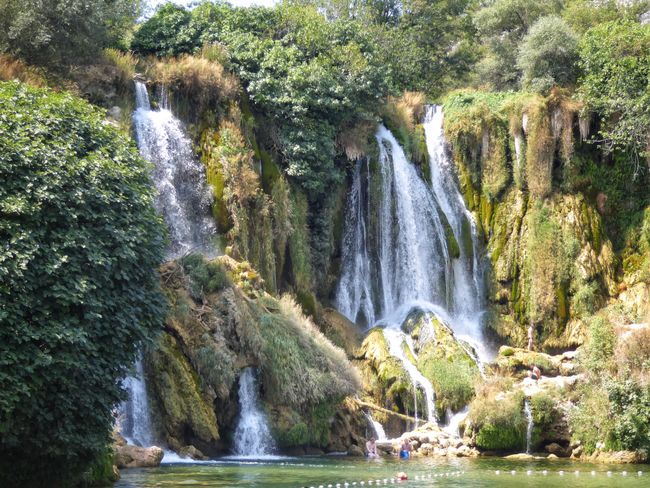
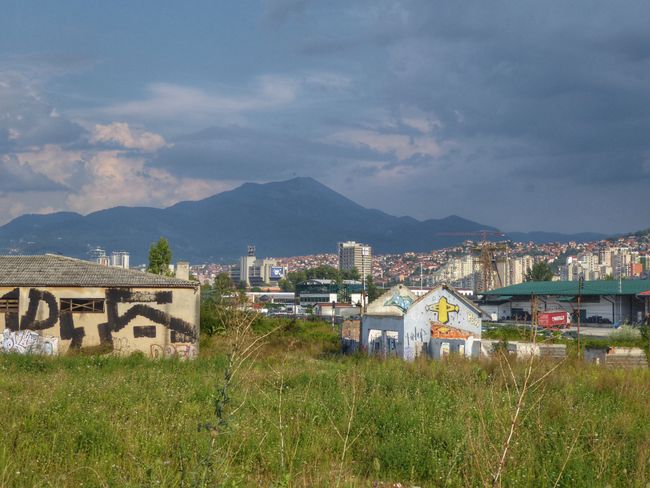
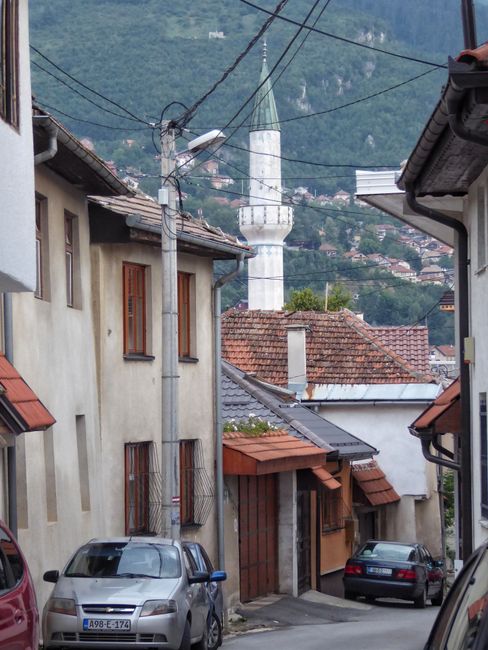
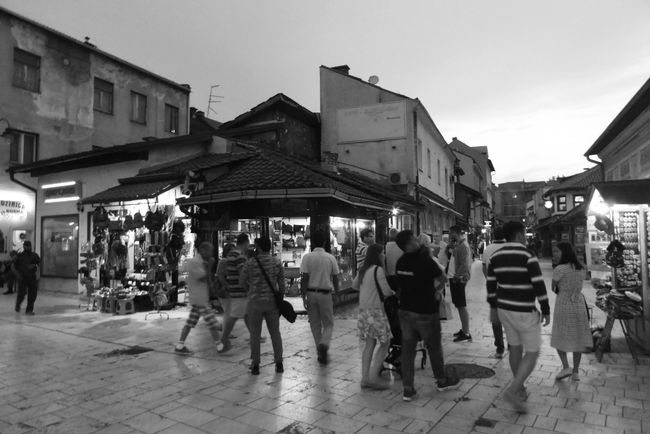
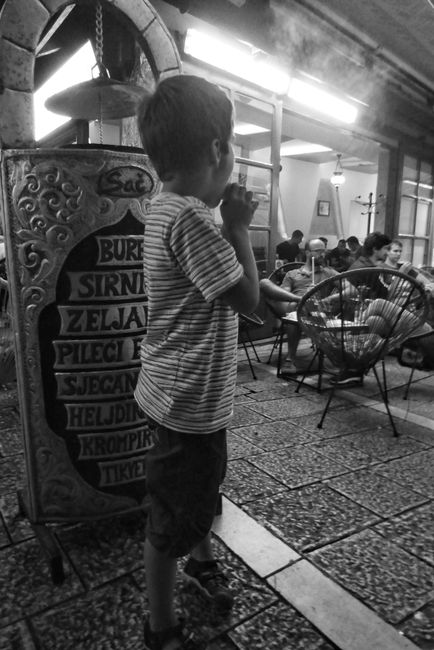
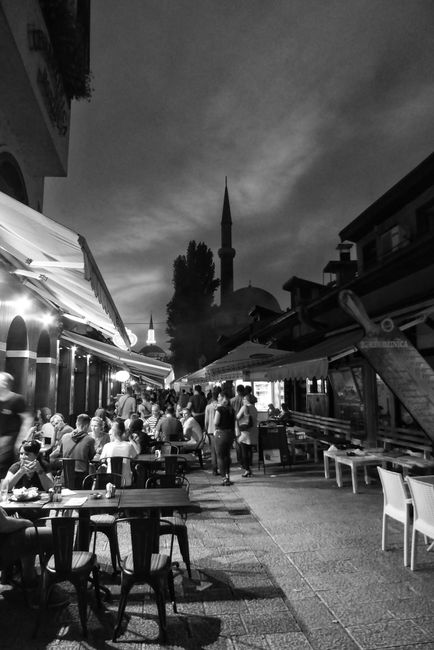
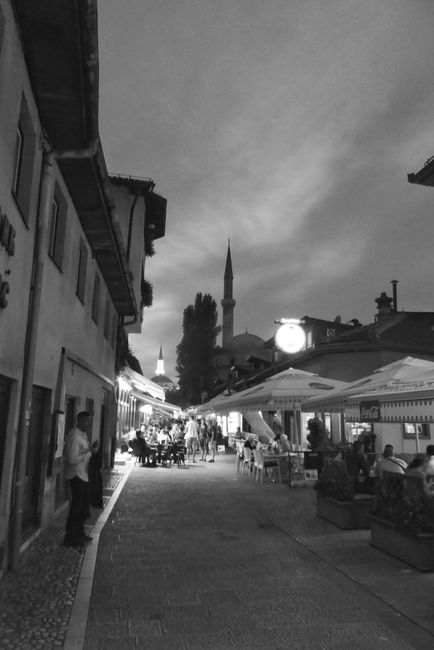
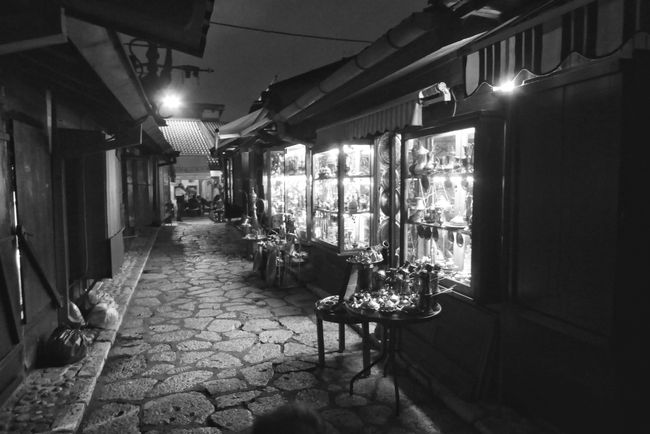
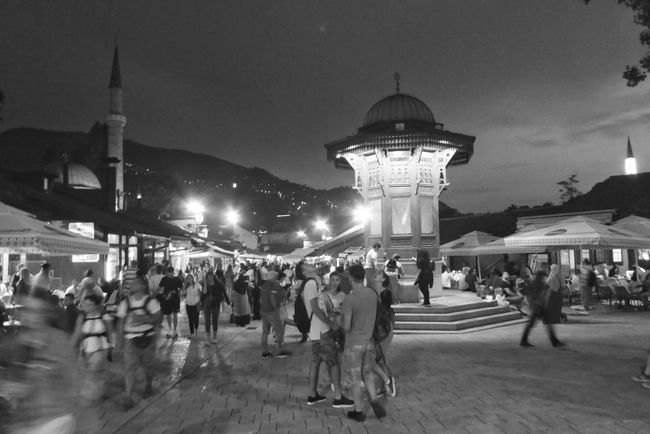
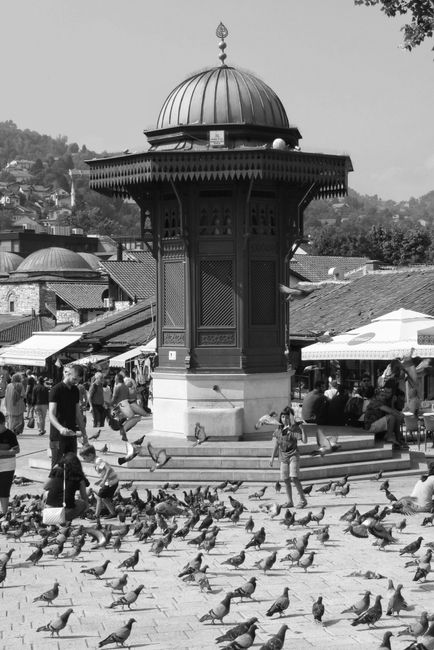
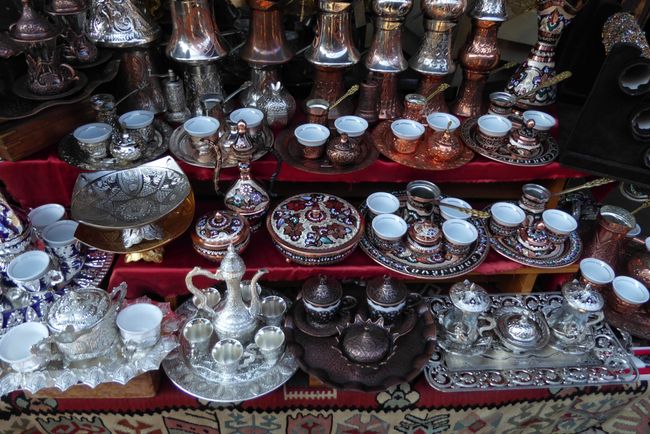
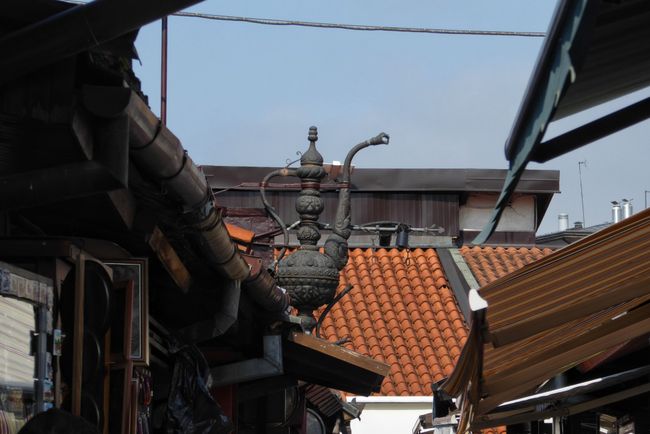
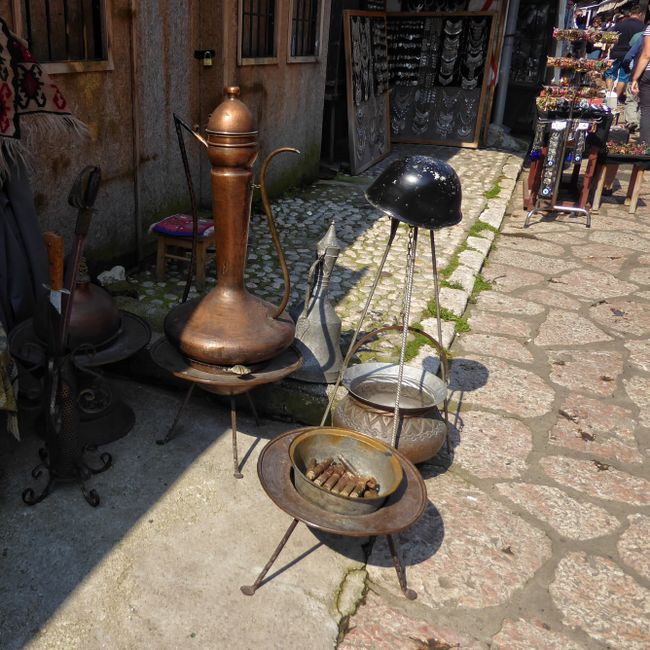
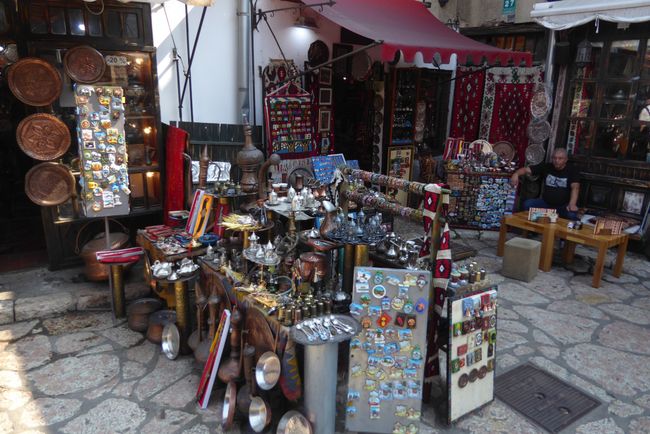
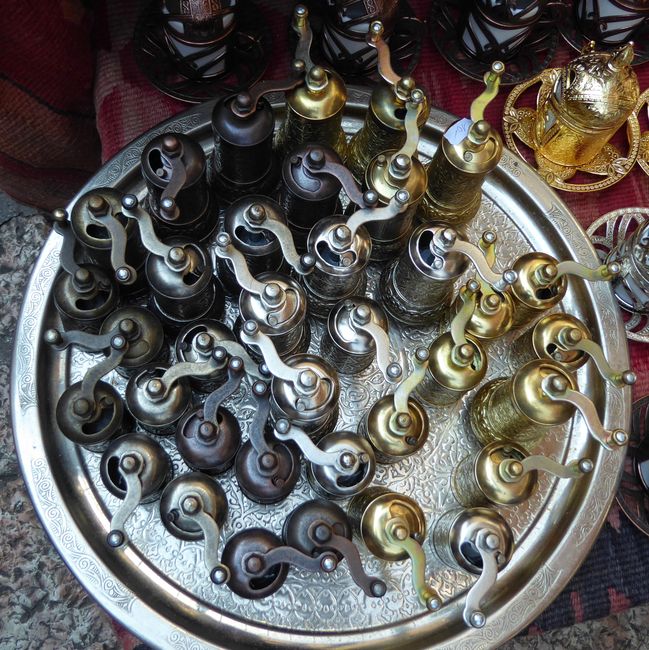
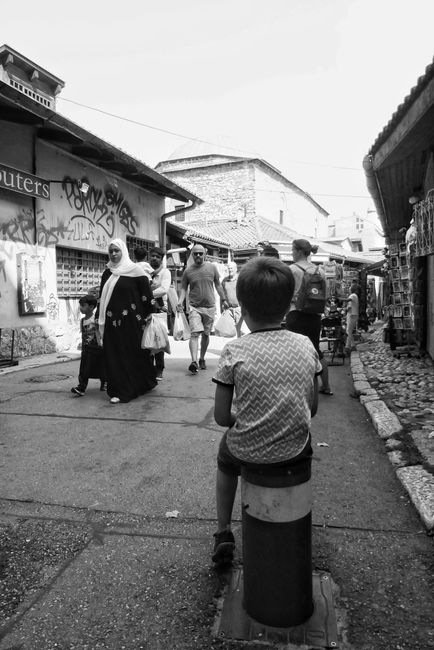
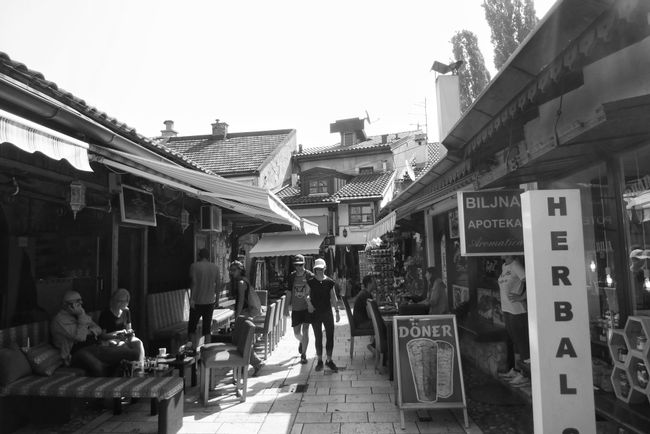
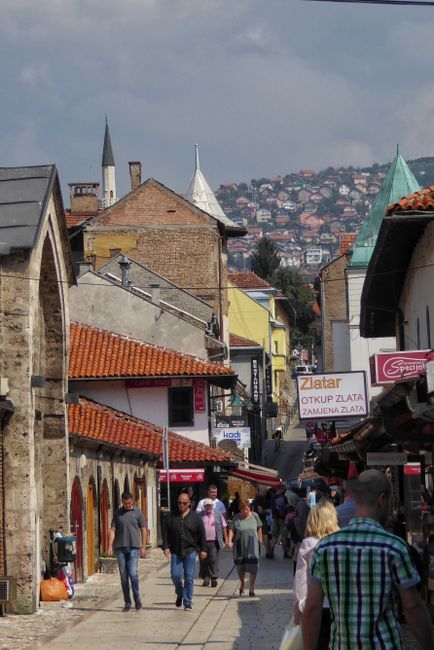
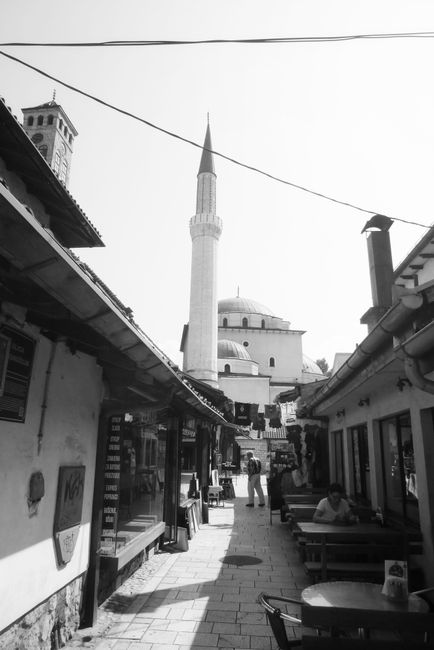
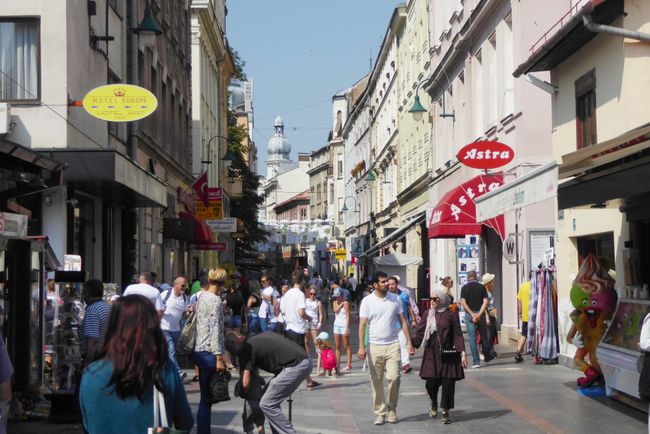
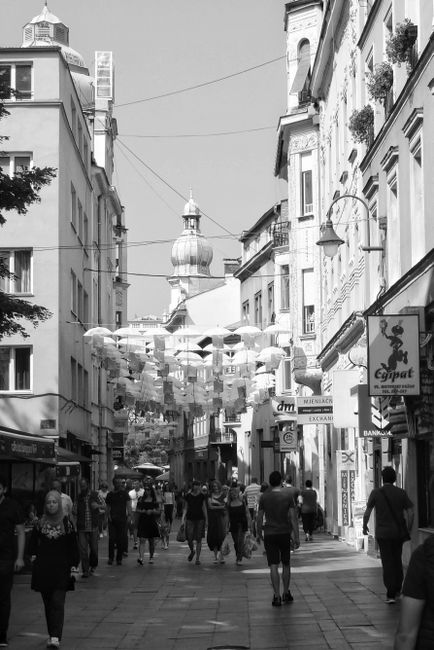
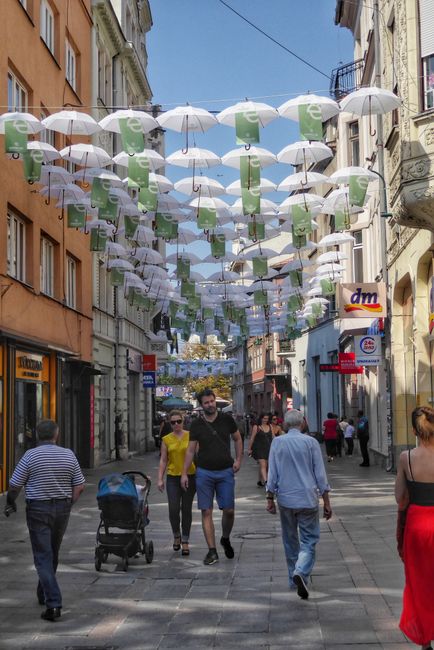
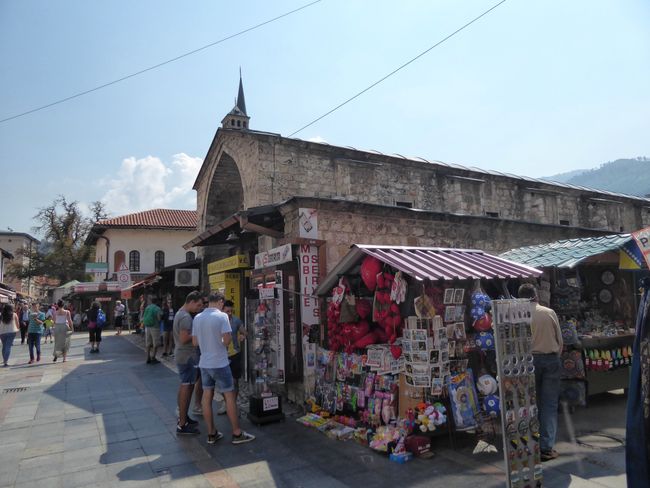
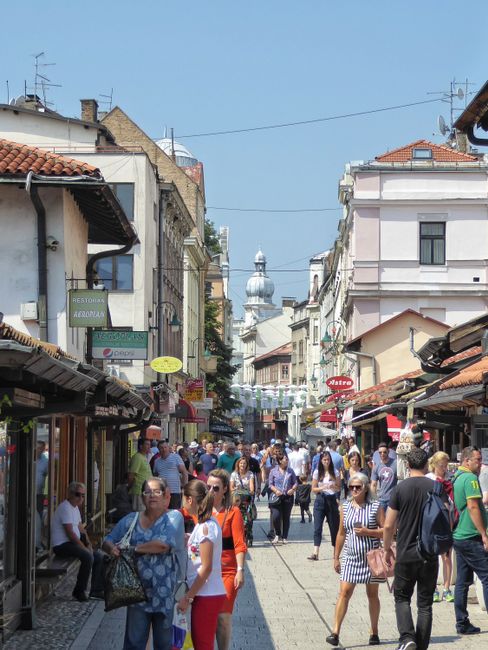
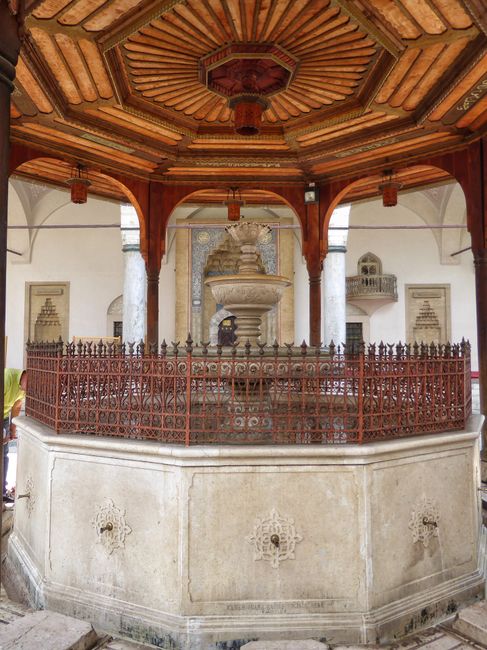
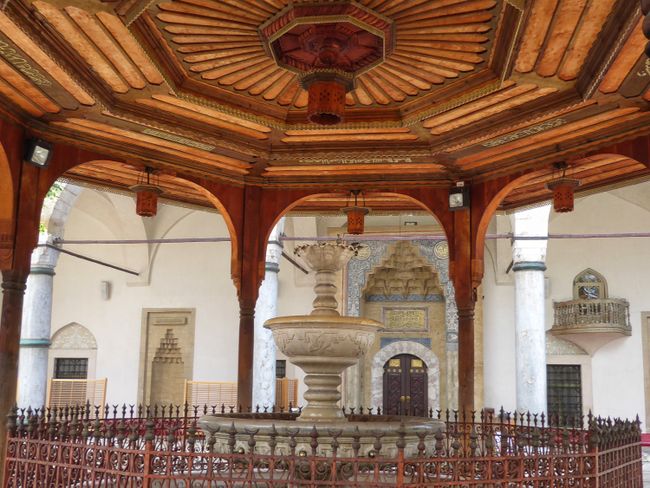
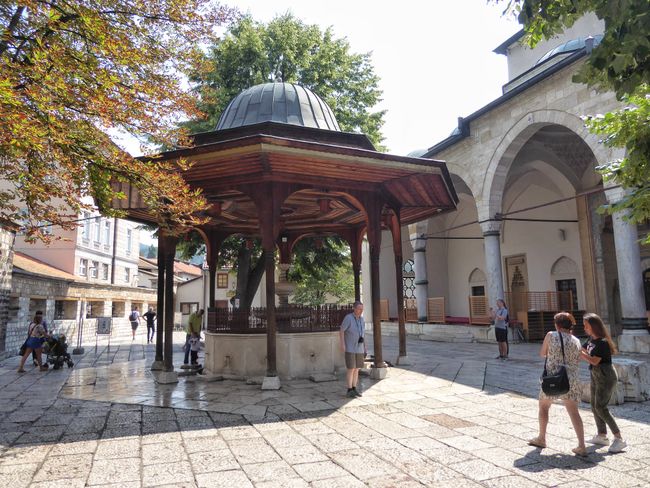
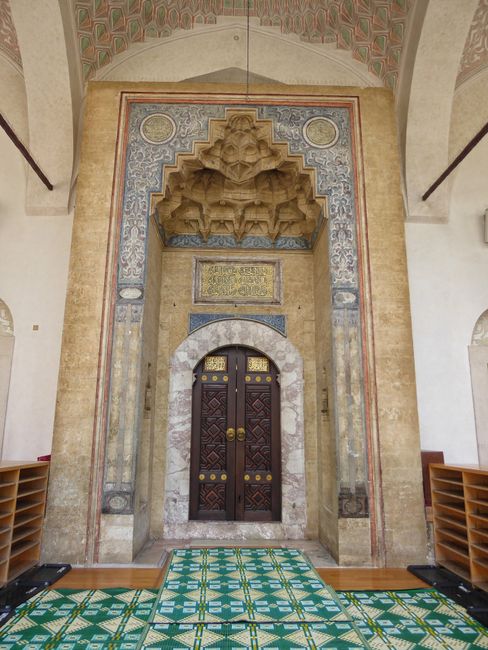
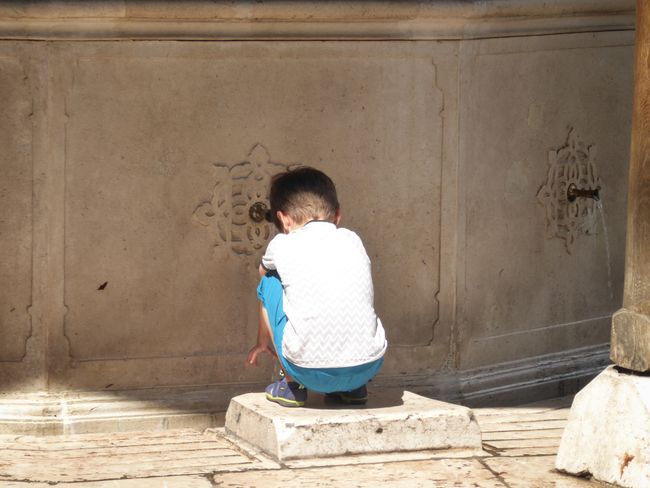
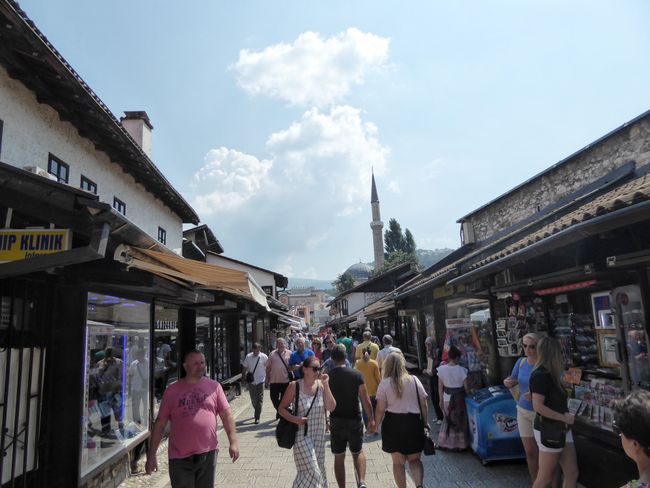
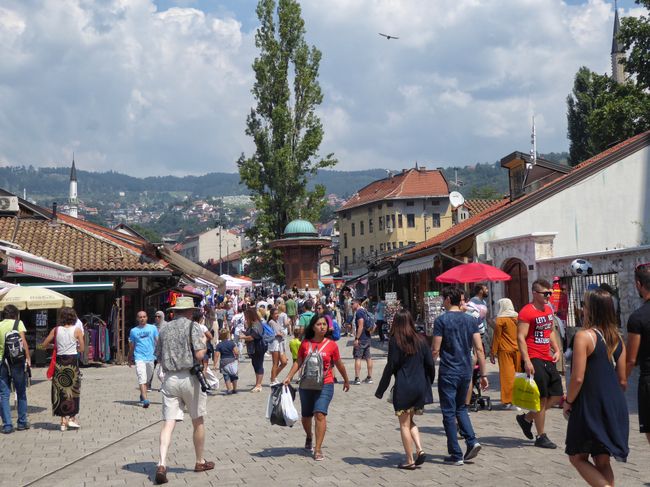
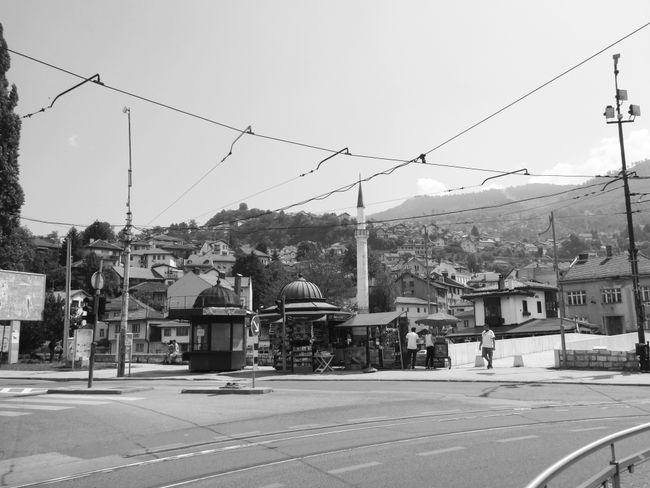
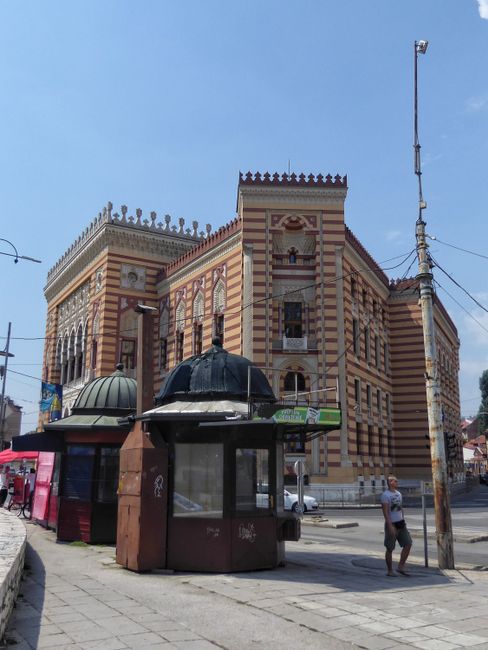
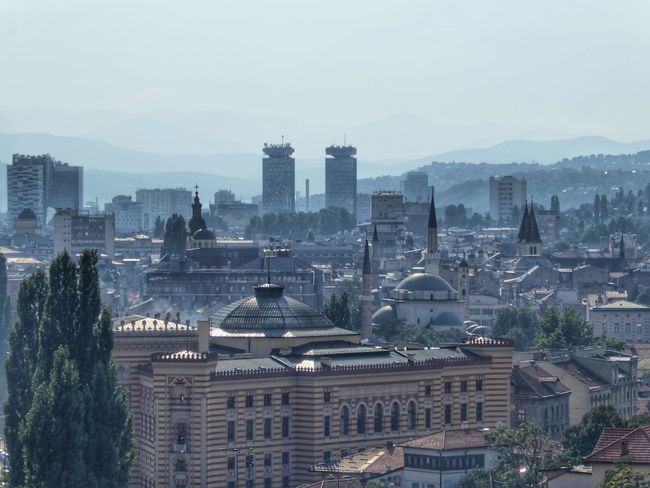
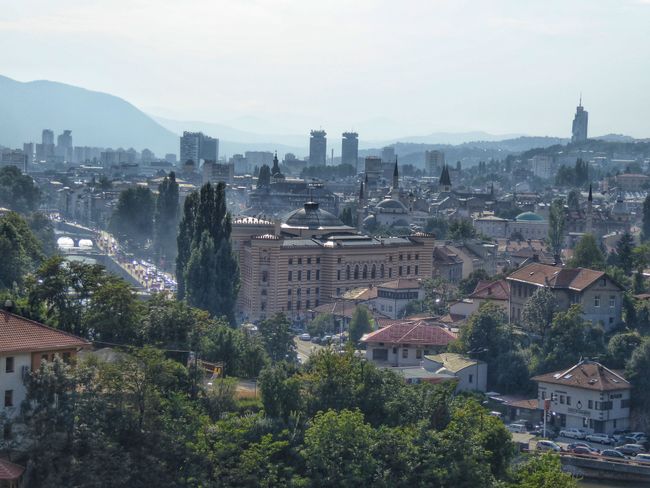
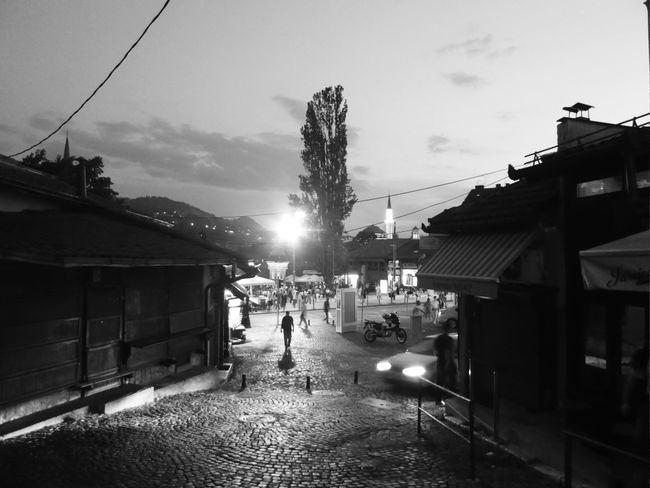
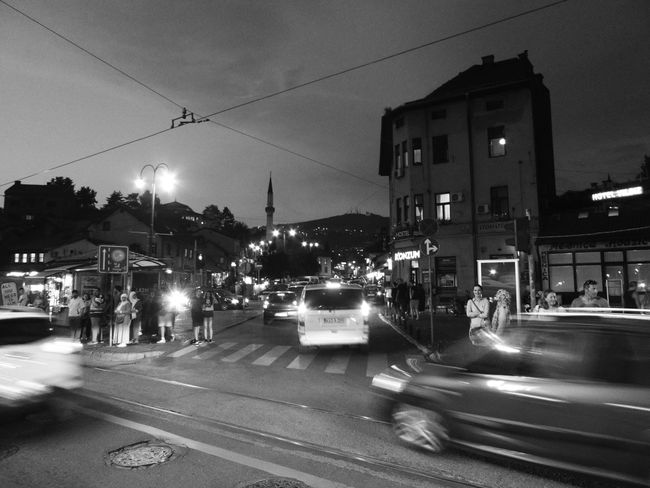
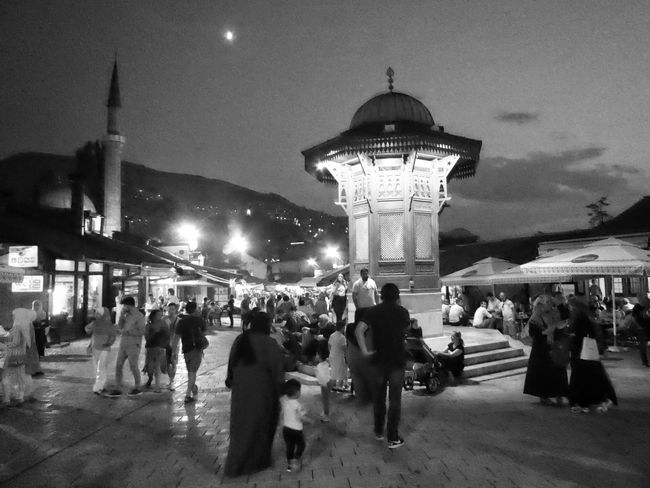
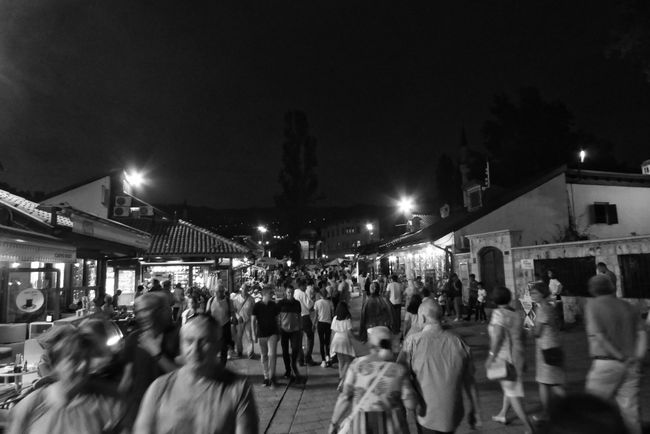
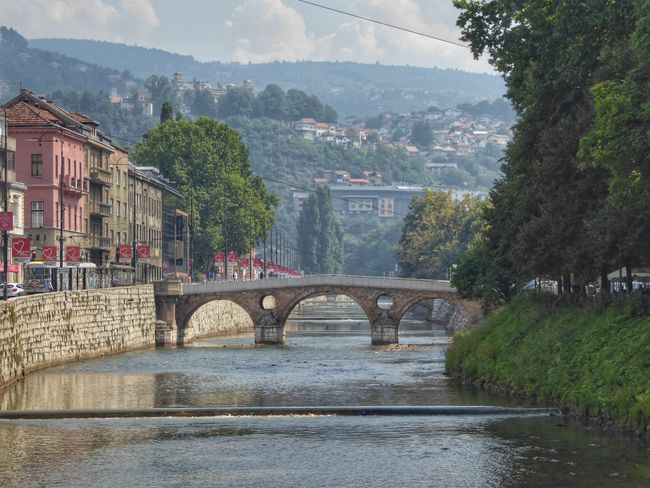
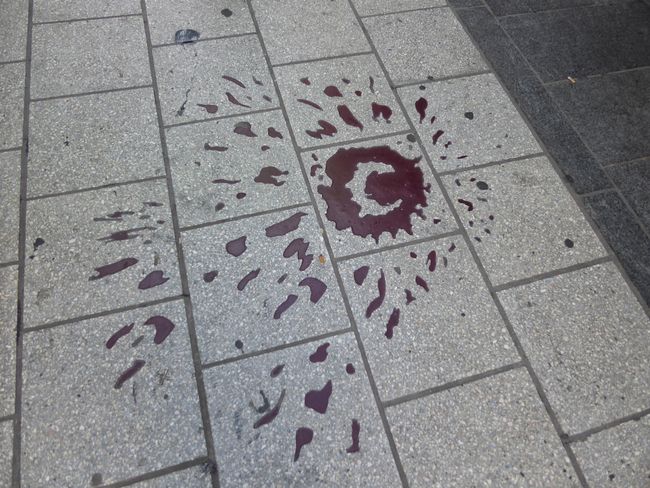
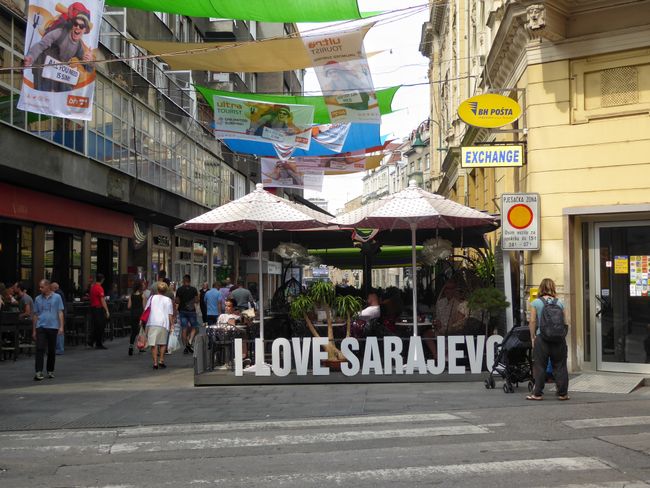
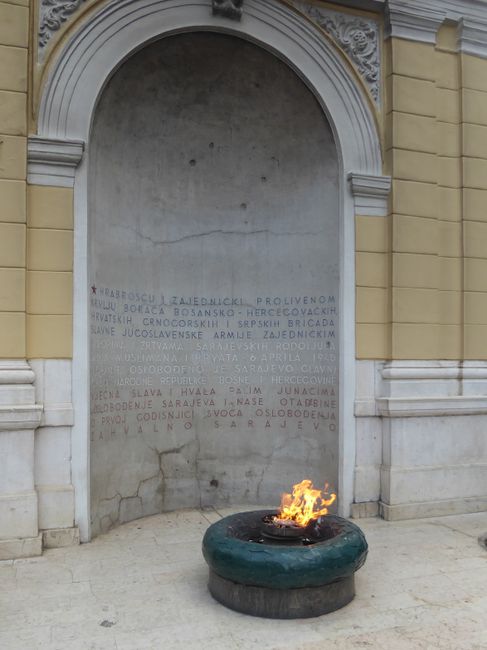
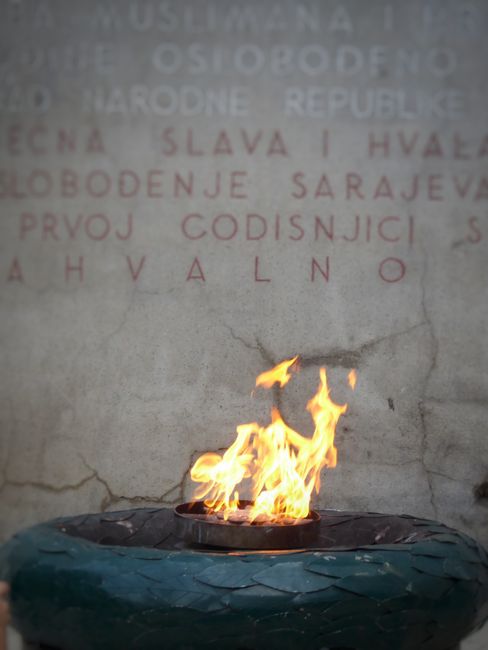
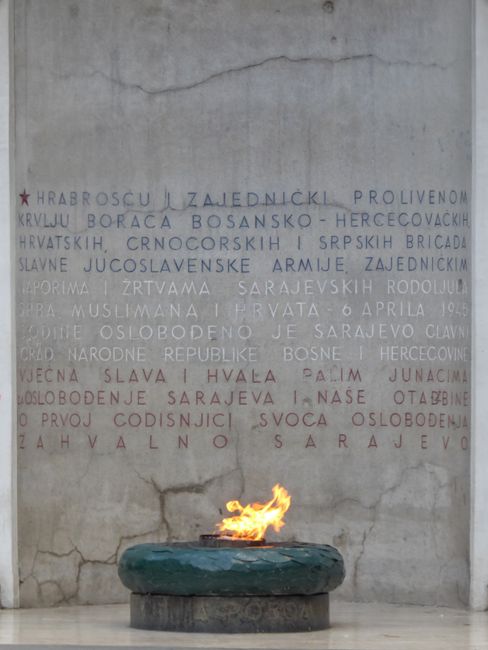
Teken in op Nuusbrief
We didn't arrive in Sarajevo until late afternoon, about 7.5 hours after leaving our apartment in Oslje. First, we crossed the border at Imotica (it was the 14th border crossing from Croatia to Bosnia and Herzegovina) and then headed towards Neum. There, we left BIH (Bosnia and Herzegovina) and drove through rocky landscapes for some time. Another border crossing was necessary at Otrik-Seoci. Our destination was the Kravica Waterfalls, which were only a small detour on the way to the capital city. They are located near the village of Studenci and are considered one of the country's main attractions. After almost two hours, we reached the waterfalls in the sweltering heat at noon and parked in a gravel parking lot that was already crowded. This spot is definitely not a hidden gem. There was already a small line at the ticket booth.
Since we couldn't use the baby buggy here, the little one went in the baby carrier in front of mama's belly. The tropical heat made us sweat profusely even before we descended to the waterfalls. Despite the high temperatures, more and more tour buses and cars arrived.
It takes a little over 10 minutes from the entrance to get to the waterfalls, which cascade about 25 meters down a 120-meter wide slope. I think there are 20 waterfalls side by side. It's a spectacular sight, if it weren't for all the people. People were swimming in the water, taking selfies everywhere, and leaving trash behind, all in a nature reserve. Hordes of tourists were climbing on the slope to take the best photo of themselves and the waterfalls.
We quickly felt overwhelmed here and started the sweat-inducing climb back up. By now, the car had gotten so hot that you could barely touch the steering wheel.
We continued our journey towards Sarajevo, passing through Medjugorje, a Catholic pilgrimage site where the Virgin Mary is said to have appeared multiple times to the villagers in the 1980s, and Mostar. The drive from Mostar became a torture. The average speed was only 32 km/h and we had to pass through every village and the incredibly chaotic and ugly city of Konjic, where a traffic jam formed. It wasn't until Tracin that we encountered a short section of newly built highway, which incurred a toll of 2.50 KM (Convertible Mark). We stopped at a completely deserted highway rest area here and, after a coffee, embarked on the final leg of the journey. But that leg was also challenging. After leaving the beautiful new highway, we were already stuck in traffic before reaching the city. Driving in Sarajevo's rush hour is really not for the faint of heart. The outskirts of the city didn't look particularly inviting either. I haven't seen such intense prefab housing and partially destroyed buildings even in the Polish coal mining region. We had to drive through the entire city to reach our pre-booked hotel, Hotel Saraj, and then up a hill. Finally, at around 6 p.m., the car was safely parked in the hotel's own parking garage.
After unloading everything we needed for three nights from the car and taking it to the room, we could finally breathe deeply on the balcony on the fourth floor with a view over the city.
The hotel seemed to have stopped in time. The carpet, which was laid out everywhere, looked worn out and dirty. Smoking was allowed in the hallways and lobby, but there were no fire extinguishers, illuminated emergency exits, smoke detectors, or fire doors. Our room was furnished with ancient furniture but practically consisted of two rooms, so we had more than enough space.
Before we all collapsed into bed, we went back down to the city, specifically to the Ottoman old town of Baščaršija. It was bustling here, and I think that was the moment when practically everyone began to fall in love with this incredible city.
The "Cevabdzinica Hodzic 2" had the best Ćevapi I have ever eaten in my life. The prices were incredible too. Seven grilled and heavily seasoned minced meat rolls in pita bread cost 3.5 Euros.
With this culinary superlative, the exhausting day came to an end on the balcony of the hotel room, while mosques around us called for Friday prayers.
Sarajevo (291,400 inhabitants, capital of the Federation of Bosnia and Herzegovina, Republika Srpska, and the Sarajevo Canton) is like a long tube in a plain amidst the Dinaric Mountains. The River Miljacka flows through the city. On the left bank, it rises to the south towards Trebević, where a part of the alpine competitions took place during the 1984 Winter Olympics. Just east of Sarajevo is the village of Pale, which was a center of the Bosnian Serbs during the war from 1992 to 1995. The siege of the city by the Bosnian Serb army began in April 1992 and lasted for 1,425 days, during which time the entire city center was surrounded from all sides. According to official figures, 10,615 people of all ethnic groups were killed by grenades, landmines, and especially snipers. About 50,000 were partly seriously injured. The city was without electricity and water supply for a long time. The traces and the suffering that this war has left behind are already visible when passing through the city. Many of the prefab buildings have bullet holes and damage from grenades.
On the next morning, we first headed to the oriental old town around Baščaršija Square. Here, there are many narrow streets framed by rather simple and low buildings, some with tiled roofs. Numerous minarets complete the picture. Different cultures and religions meet here. In addition to the numerous mosques, there are also Serbian Orthodox churches and synagogues. This circumstance has earned Sarajevo the nickname "Little Jerusalem". The often tiny shops sell a huge amount of handmade copper coffee pots ("dzezva"), which are used to make Bosnian coffee, including mocha cups and decorated trays. There was also plenty of other handmade trinkets.
It smelled of grilled meat, unknown spices, and water pipes. On the streets, young women were completely veiled with a burka and sunglasses, and other Muslim women were stylishly dressed, made up, and wearing fashionable headscarves. It was a charming and exotic world that immediately captivated us again. In the next two days, there would be several more culinary superlatives here around the famous fountain: Bosnian coffee, falafel, kebab, and baklava, all world-class and incomparable to what is usually served here.
Looking back, the three days in Sarajevo were definitely one of the highlights of our trip. A visit to this fascinating and historic city is definitely a must if you are interested in European history. In June 1914, the whole world was watching Sarajevo when Archduke Franz Ferdinand of Austria-Hungary and his wife, Sophie Chotek, were assassinated during their visit to the city by Gavrilo Princip, a member of the Serbian nationalist movement Young Bosnia. The assassination, planned by the Serbian secret society "Black Hand", triggered the July Crisis, which ultimately led to World War I.
From Sarajevo, our journey continued to Montenegro, on bad roads and through mountainous landscapes, past burning garbage dumps and around rocks that had completely blocked the road...
Teken in op Nuusbrief
Antwoord
